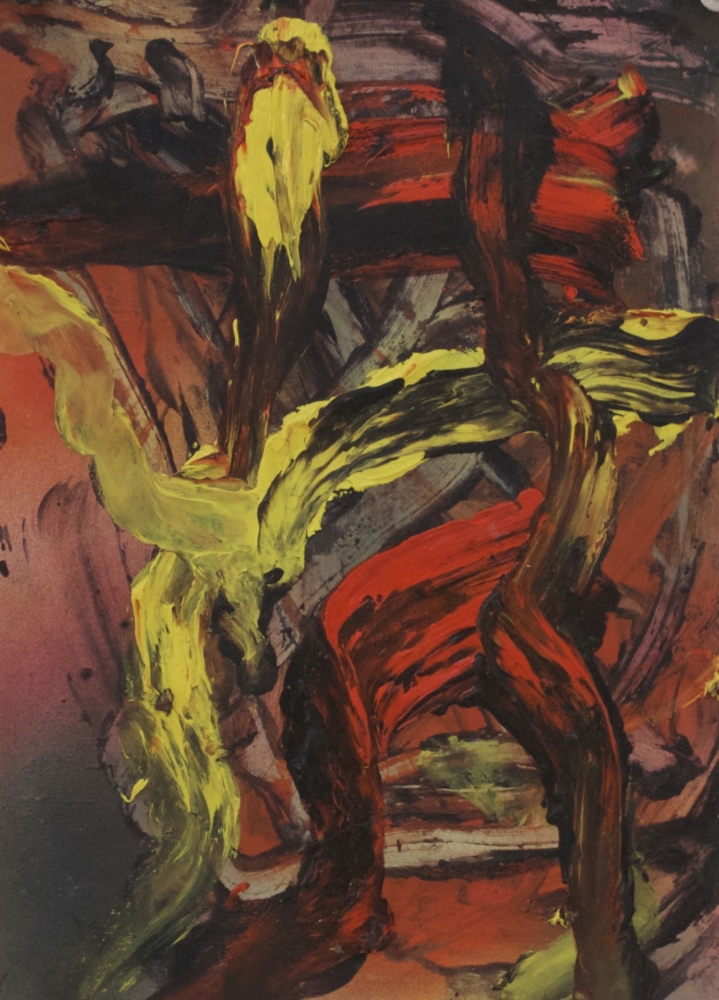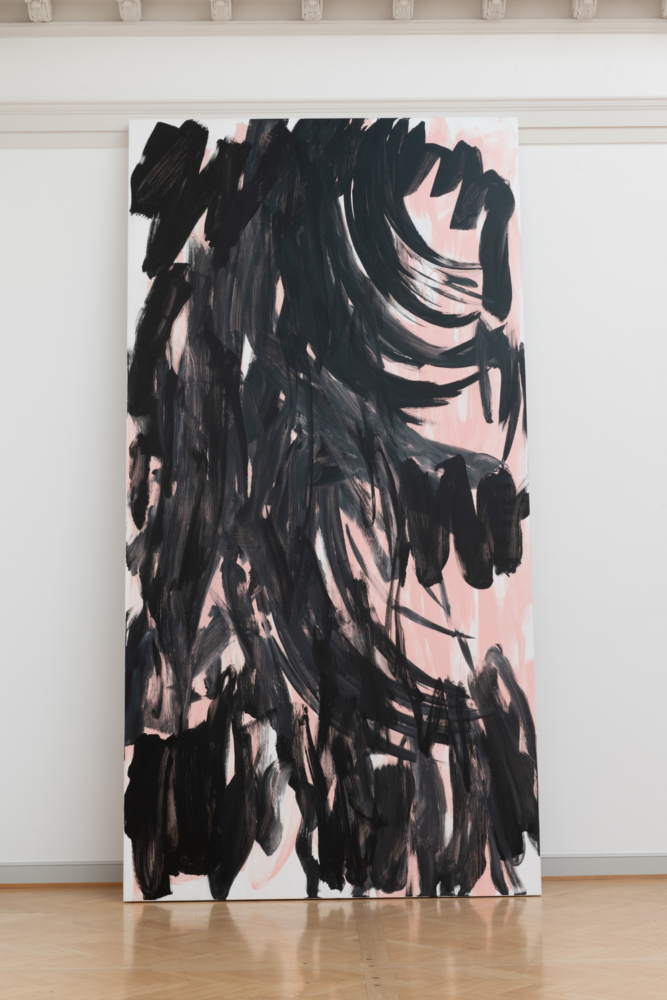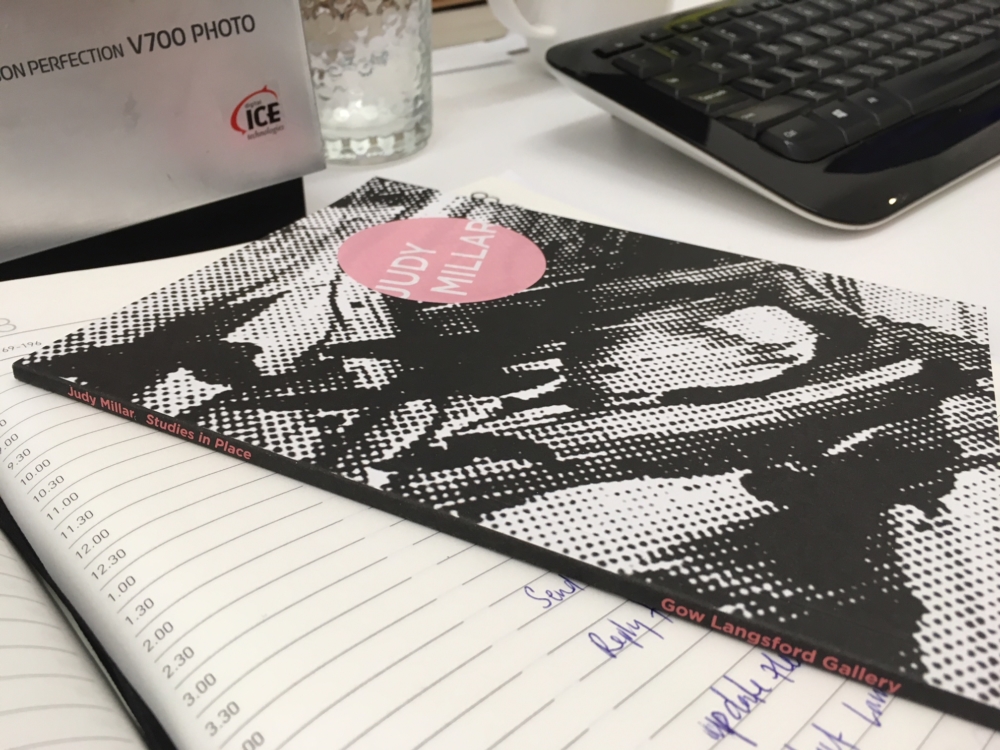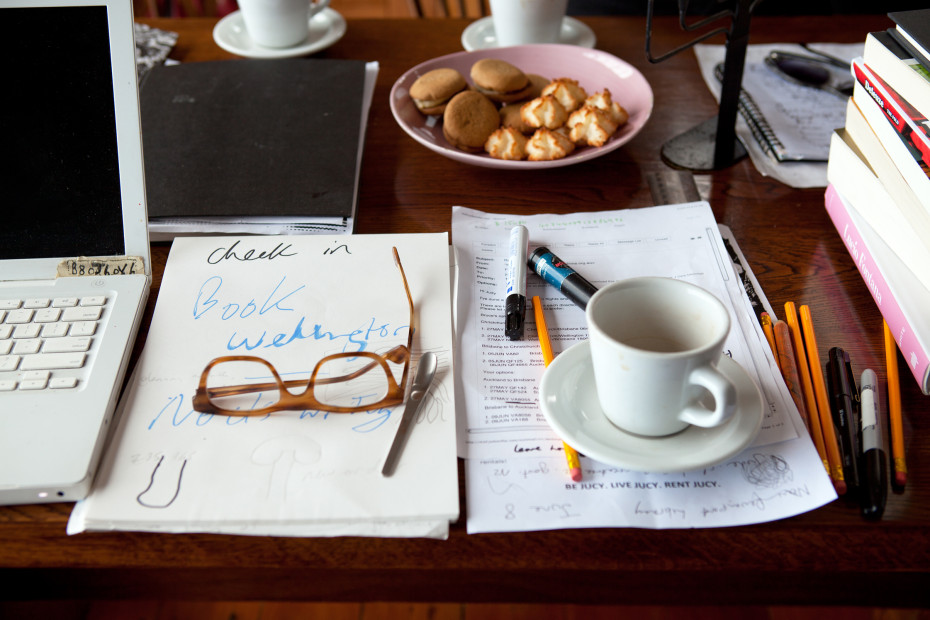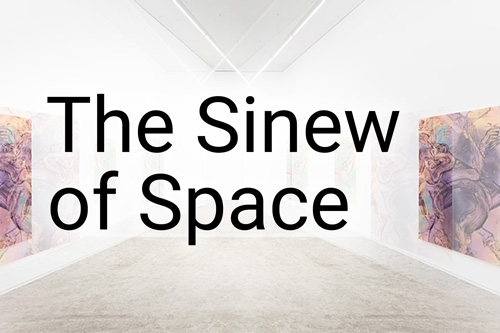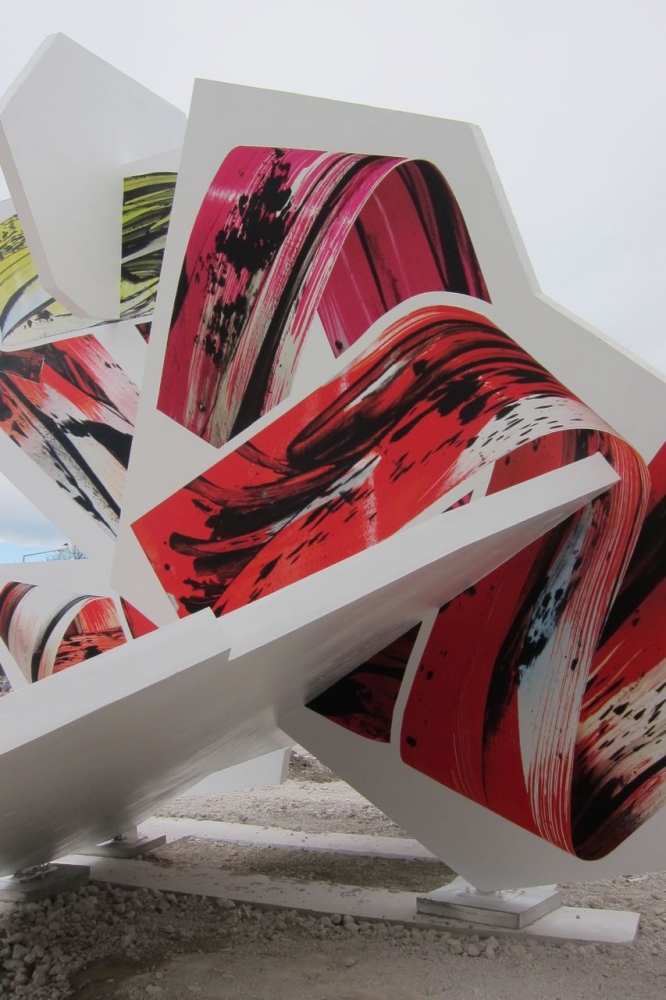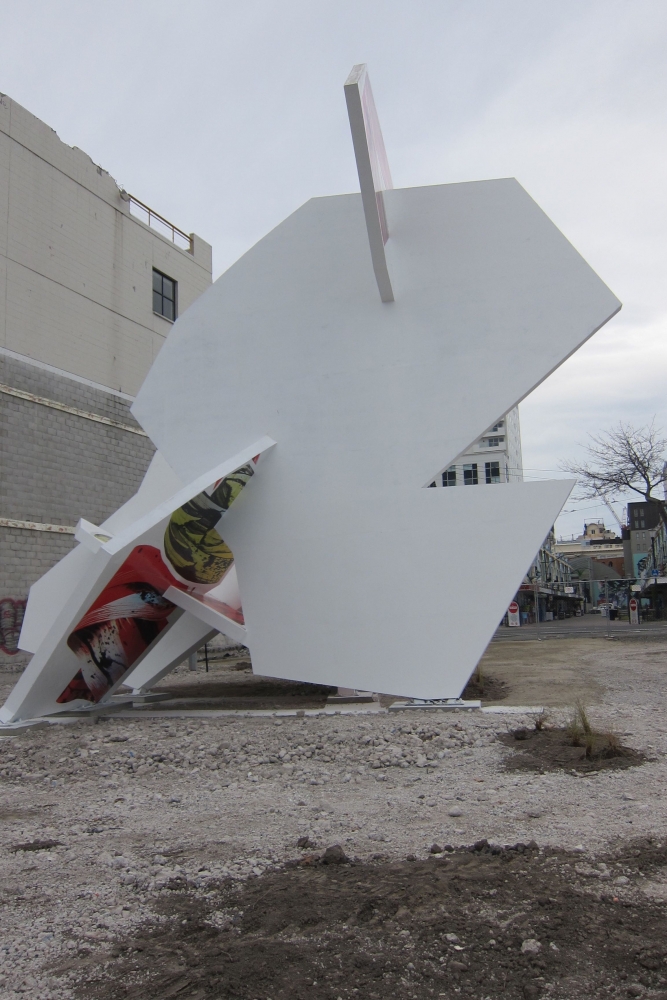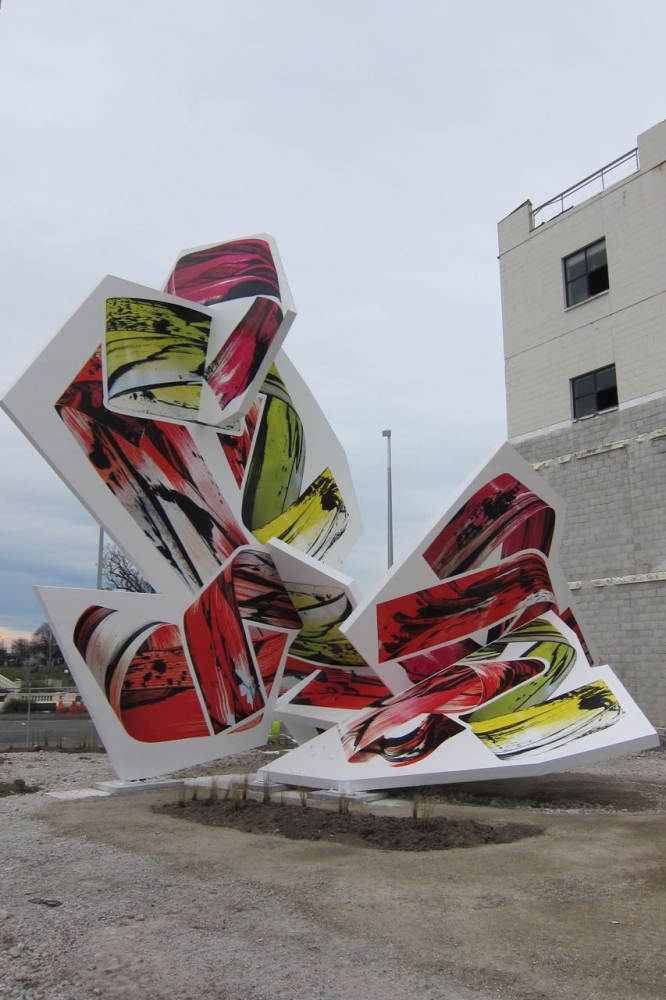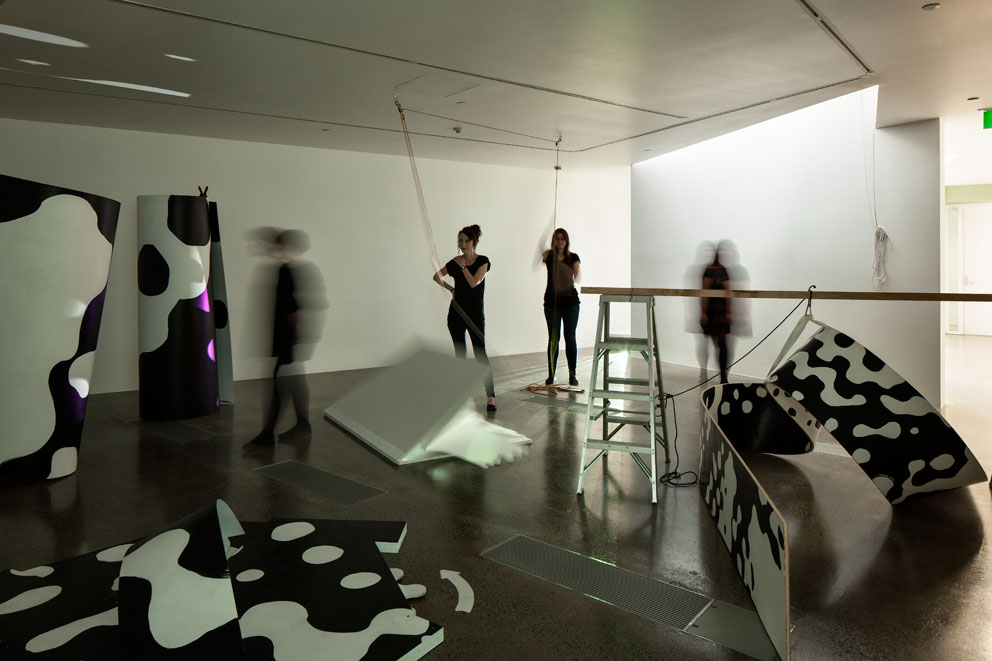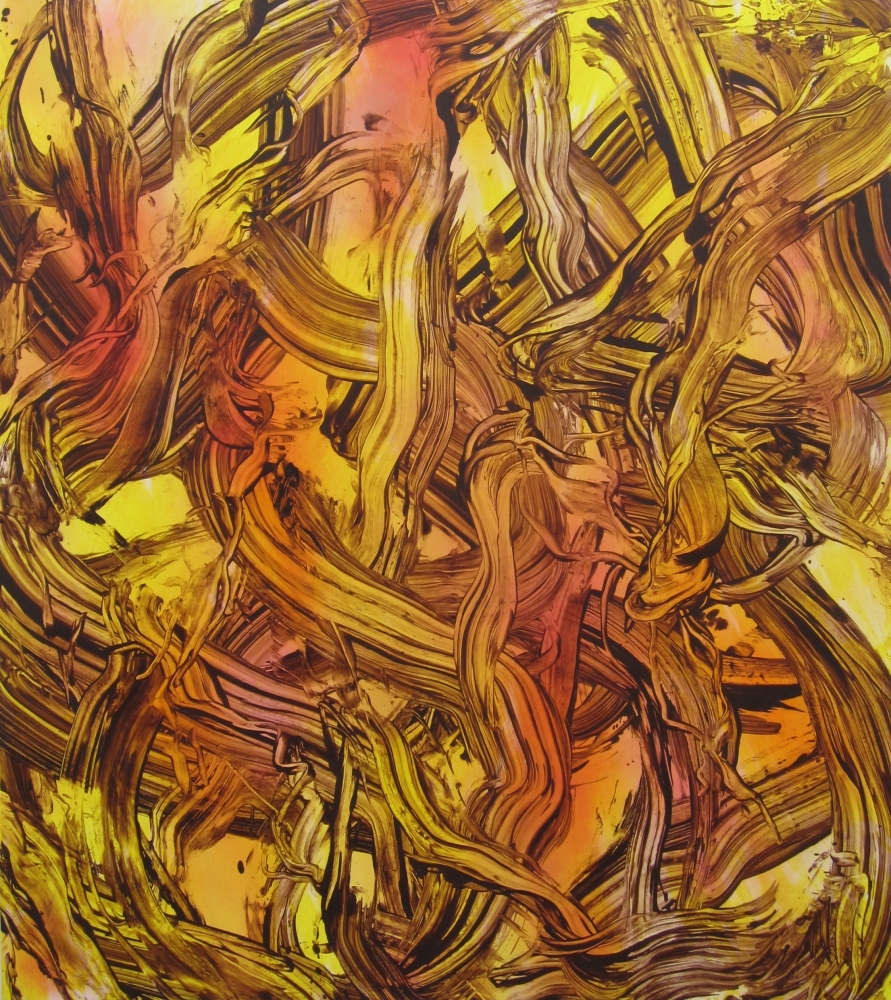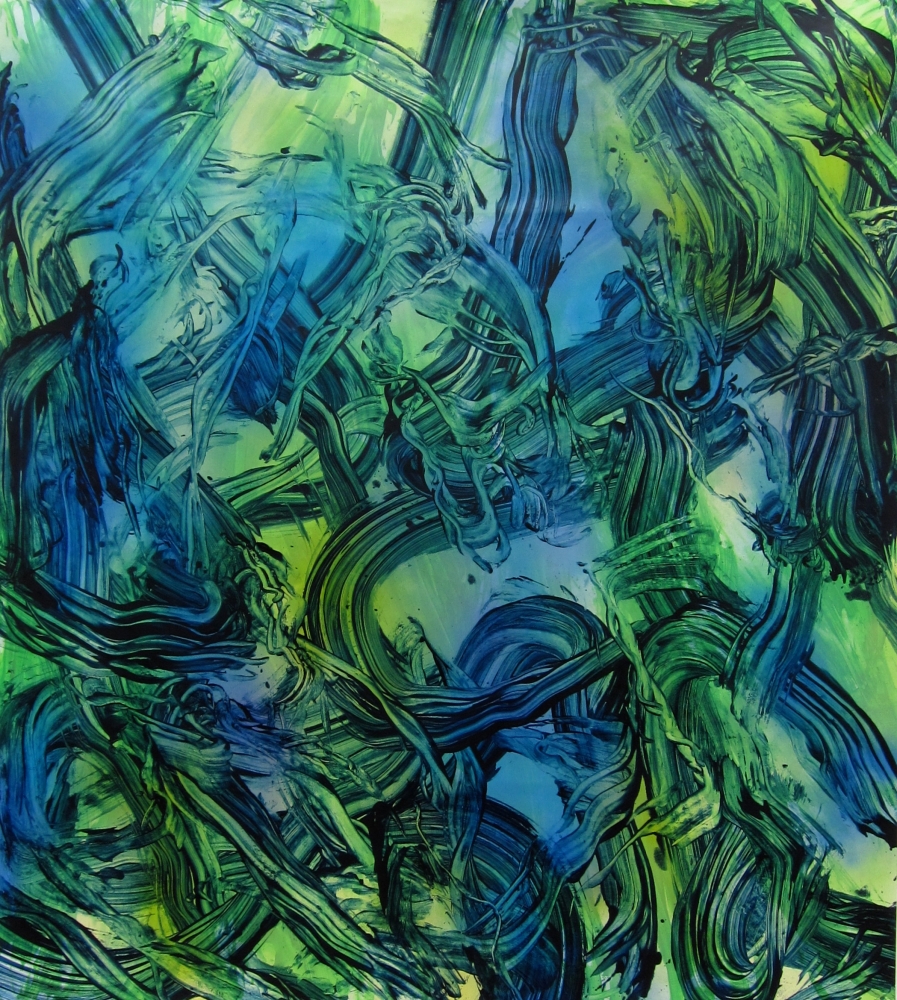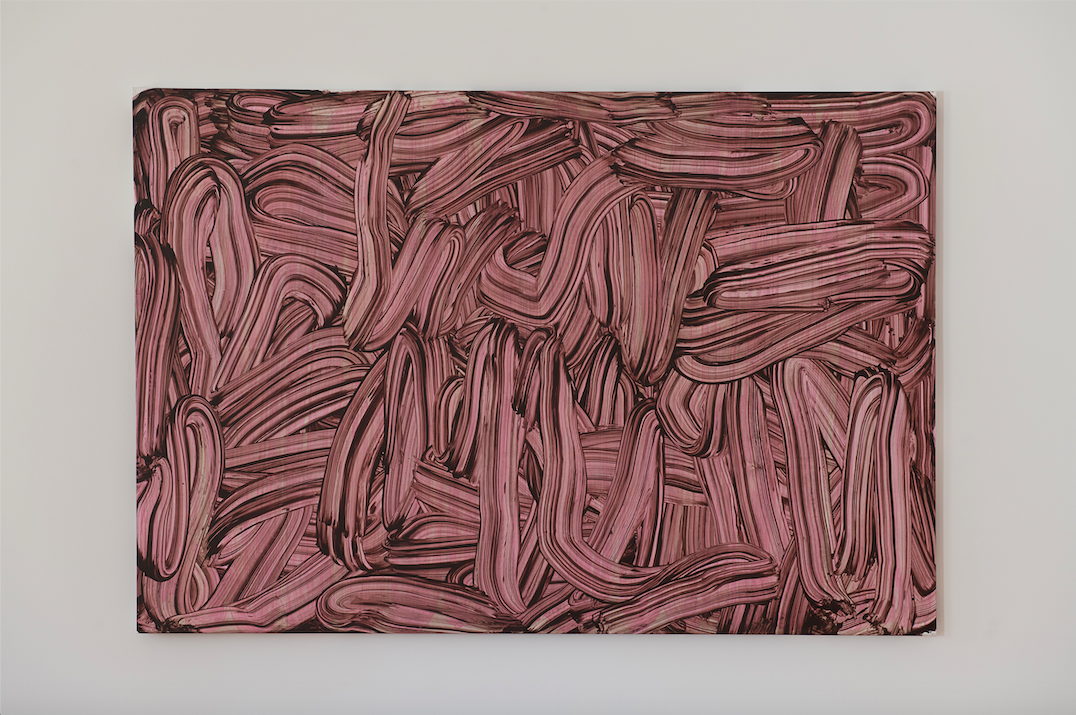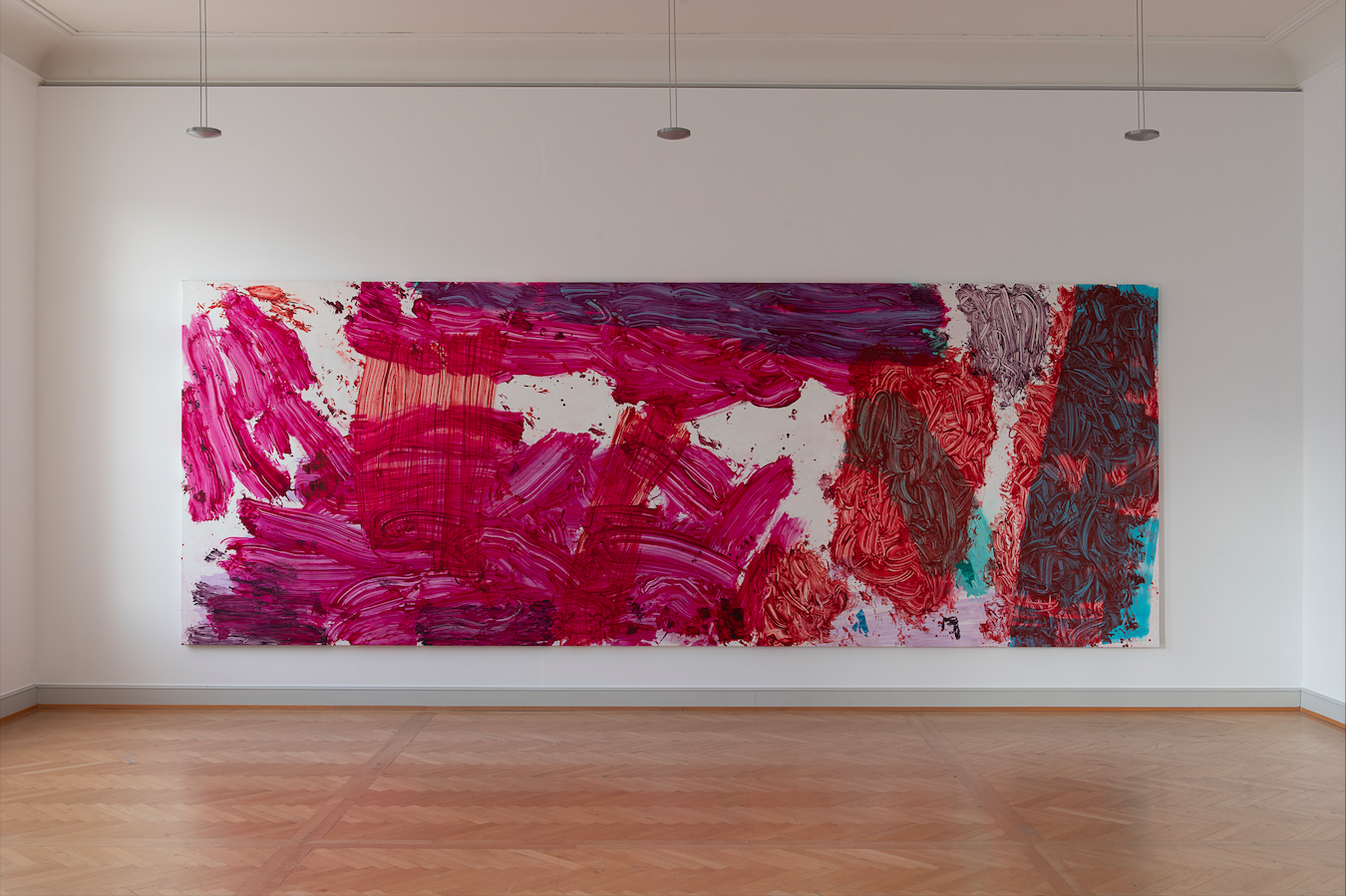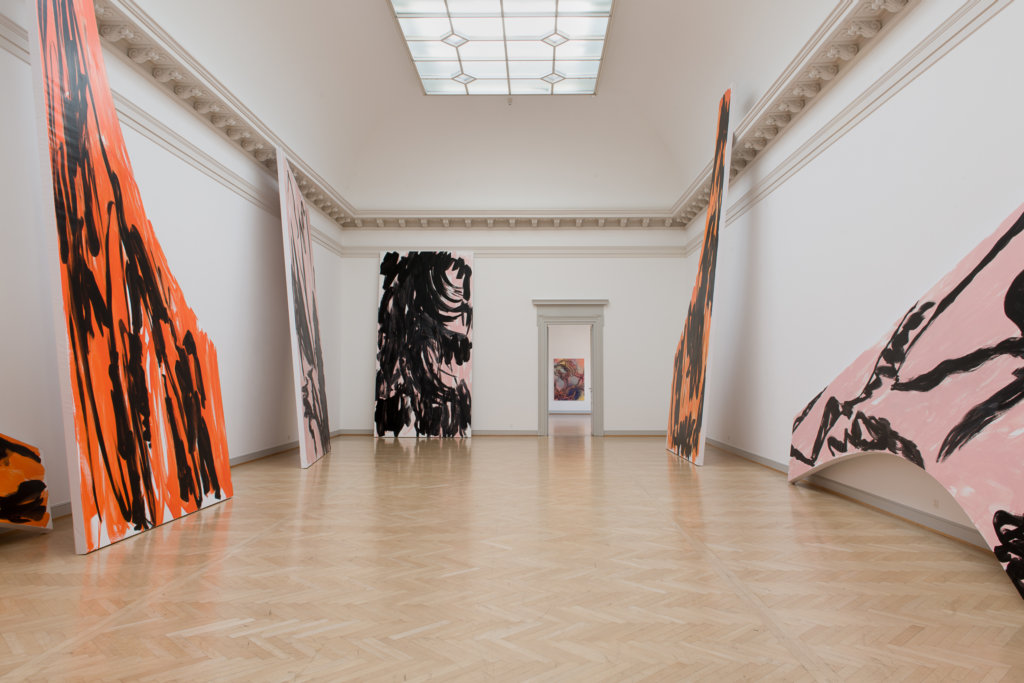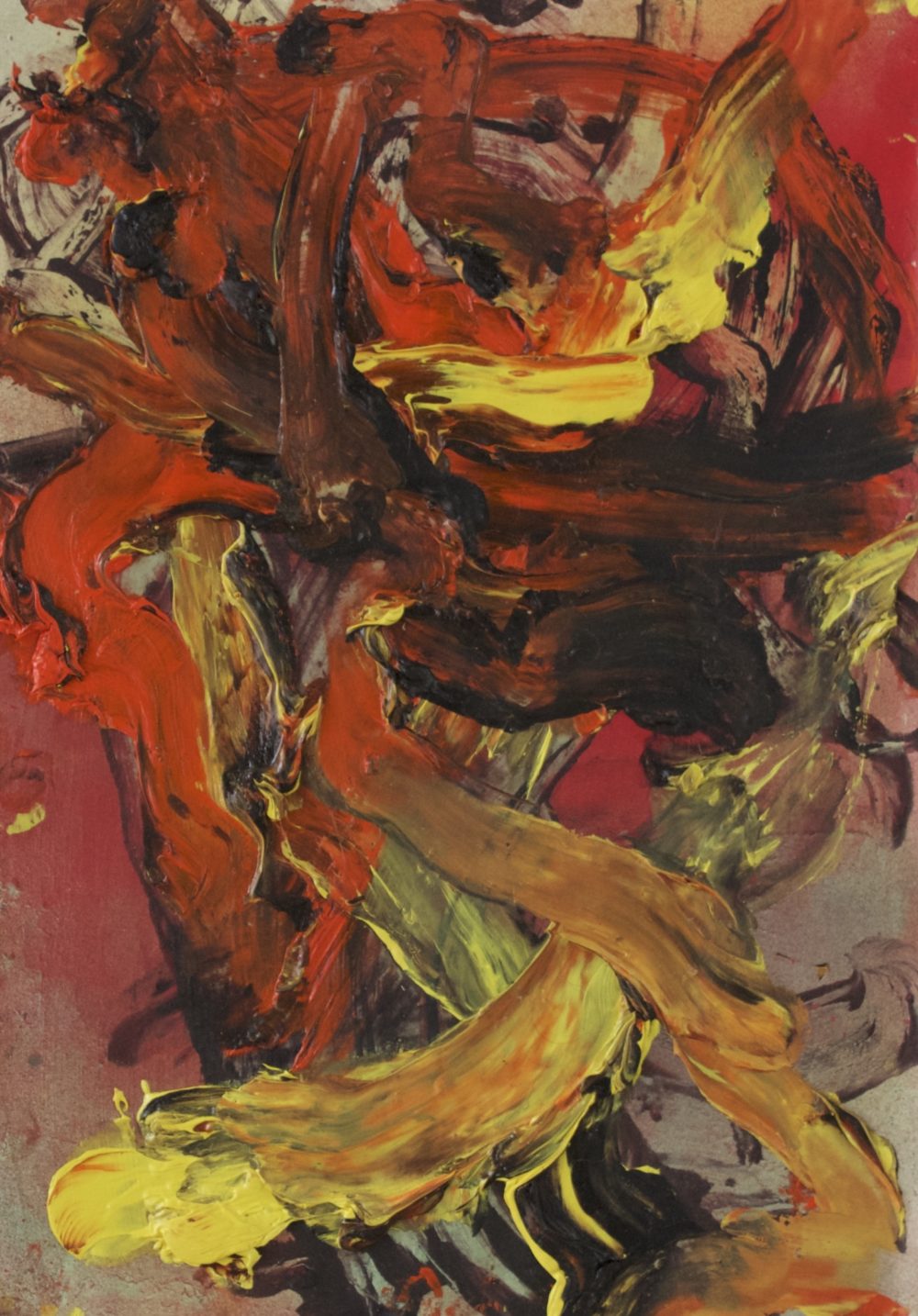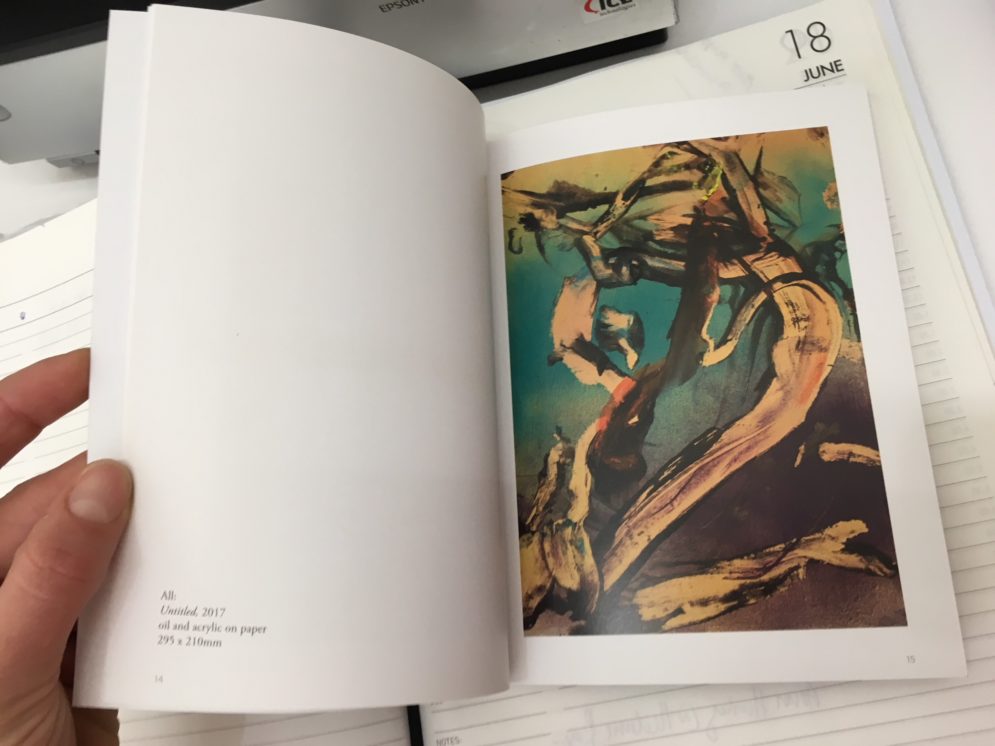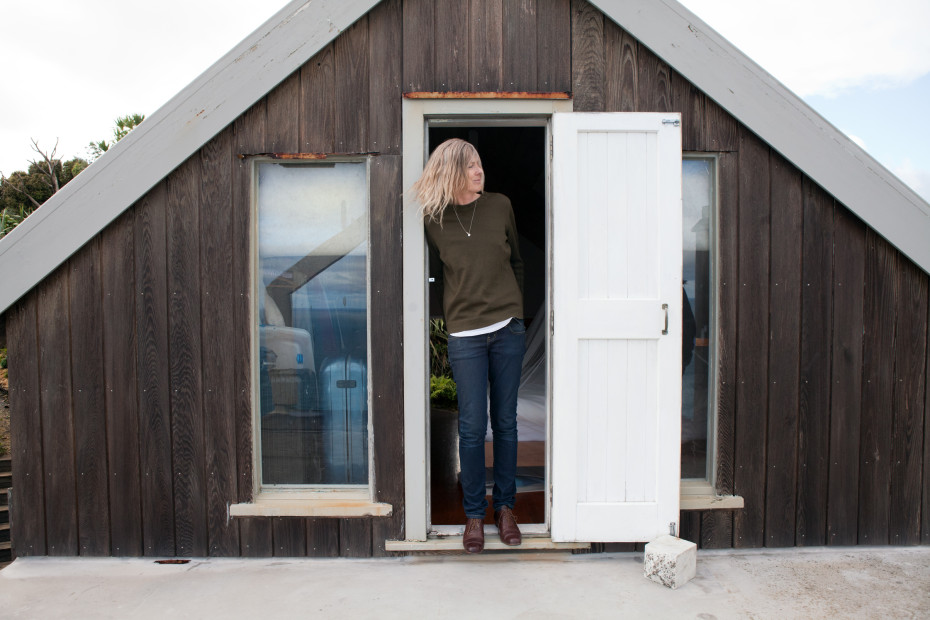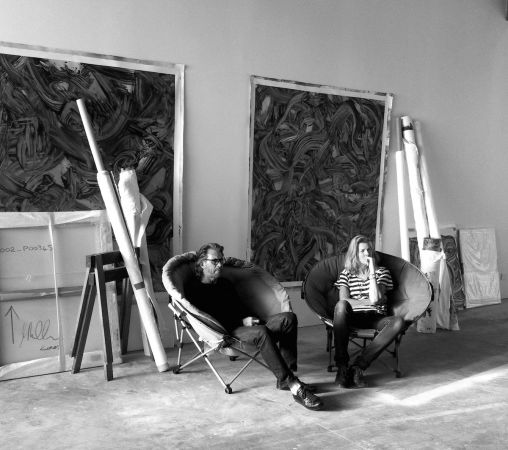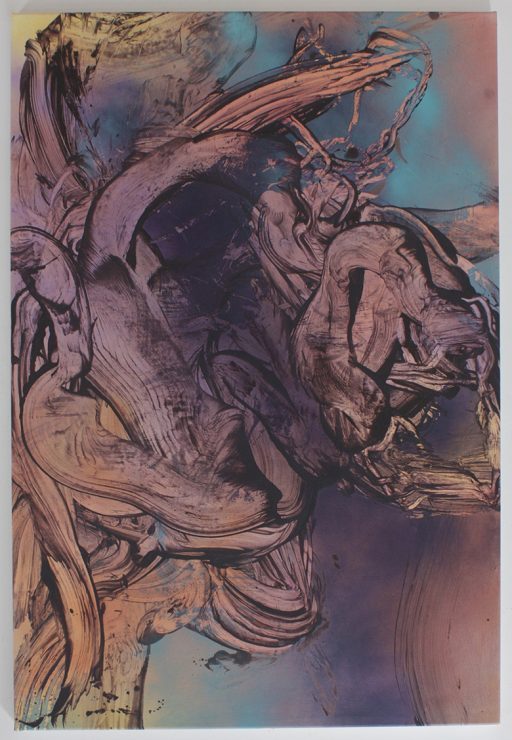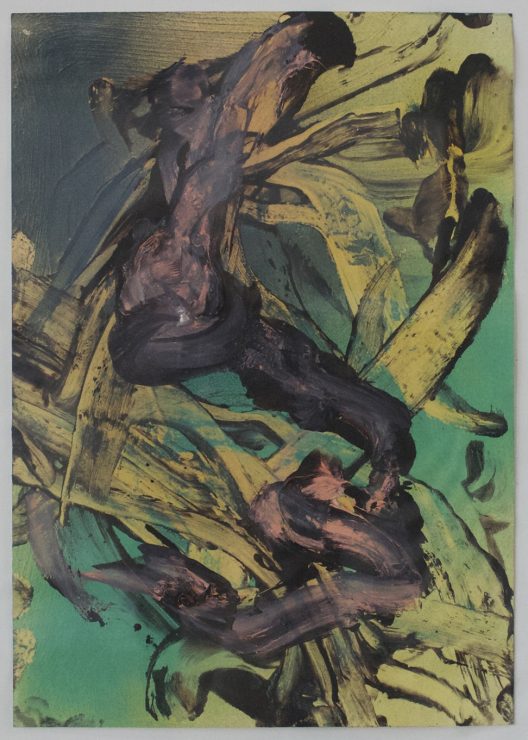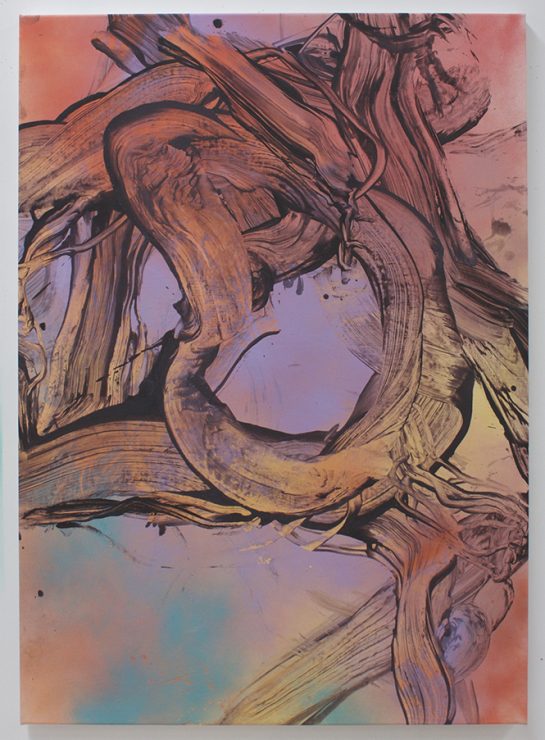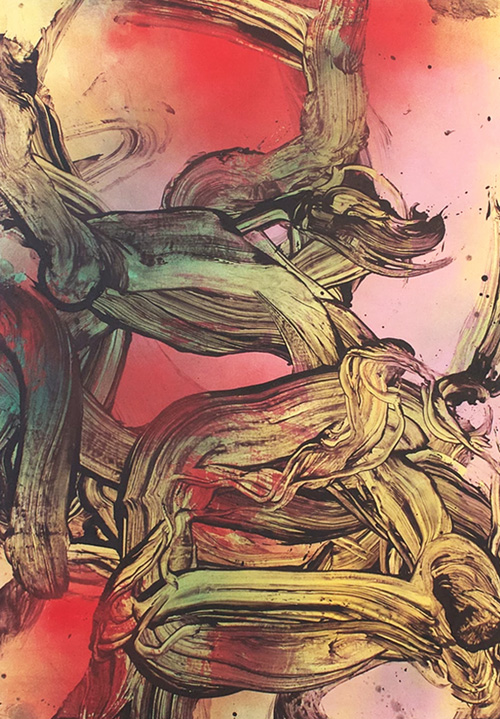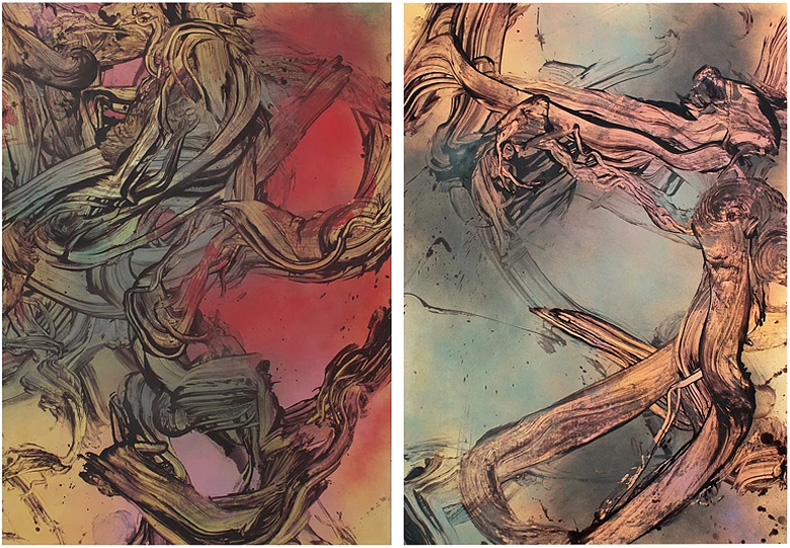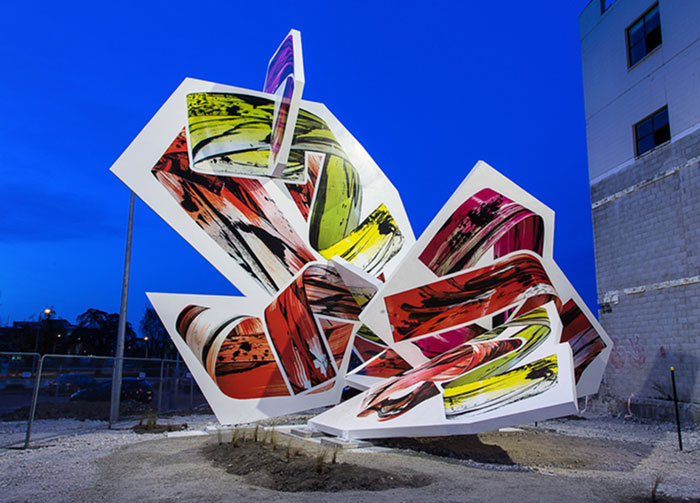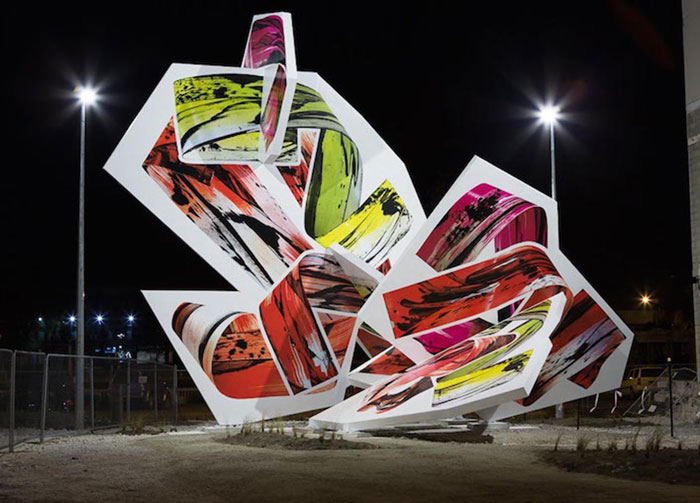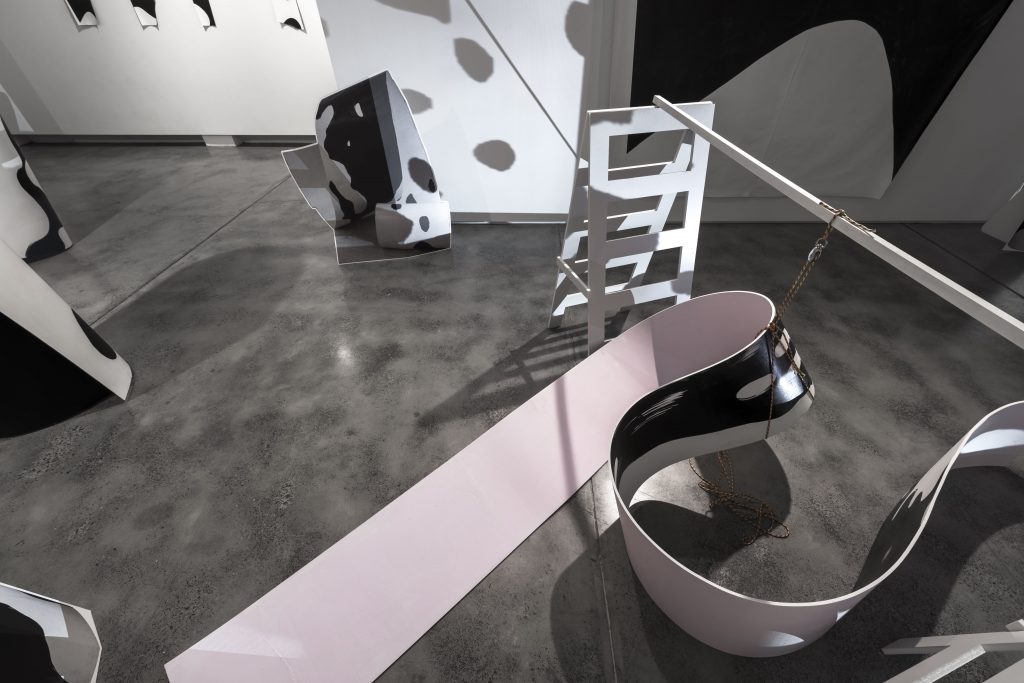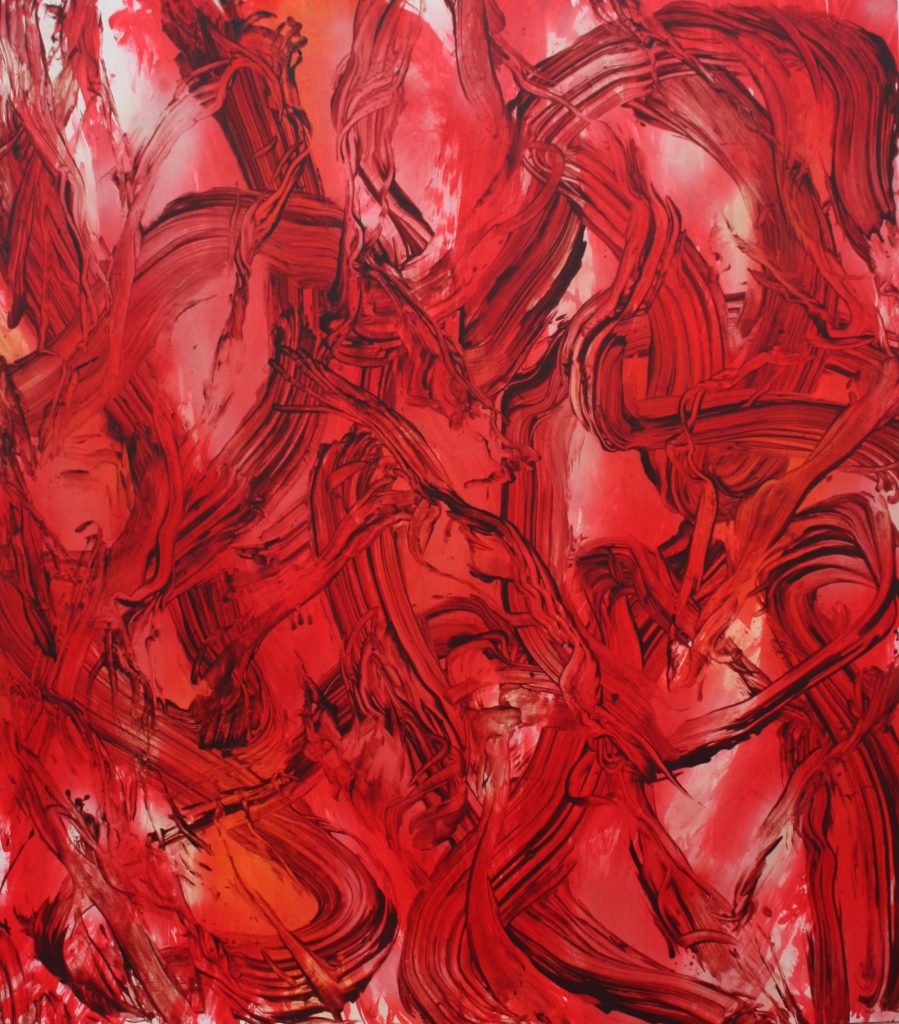Three Judy Millar Paintings
Review of Welcome to the Fluorescence
Solo exhibition at Nadene Milne Gallery, Christchurch. 2018.
By Andrew Paul Wood.
Originally published on Eye Contact.
19th April 2018.
“A gesture cannot be regarded as the expression of an individual, as his [sic] creation (because no individual is capable of creating a fully original gesture, belonging to nobody else), nor can it even be regarded as that person’s instrument; on the contrary, it is gestures that use us as their instruments, as their bearers and incarnations.” – Milan Kundera, Immortality (1990)
‘Gesture’ and ‘gestural’ are vastly overused words in talking about abstract painting but remain unavoidable in talking about Judy Millar’s work. As Kundera intimates above, perhaps gestures perform us, rather than the other way around, memes proliferating like living things. Perhaps art is merely a long war to determine who is in charge. In Millar’s case, the resulting paintings are static and compressed records of the passage of time, modes of movement, the artist’s endurance, her physicality and physical limits—a record of metadata about the artist and the artistic act, its Benjaminian ‘aura of authenticity’. There is something profoundly human and humanist in this haecceity or ‘thisness’ of the artist, particularly the physical reality of the mark making in a world increasingly saturated with digital media.
-

-
Waves Without Shape. Judy Millar 2018
-
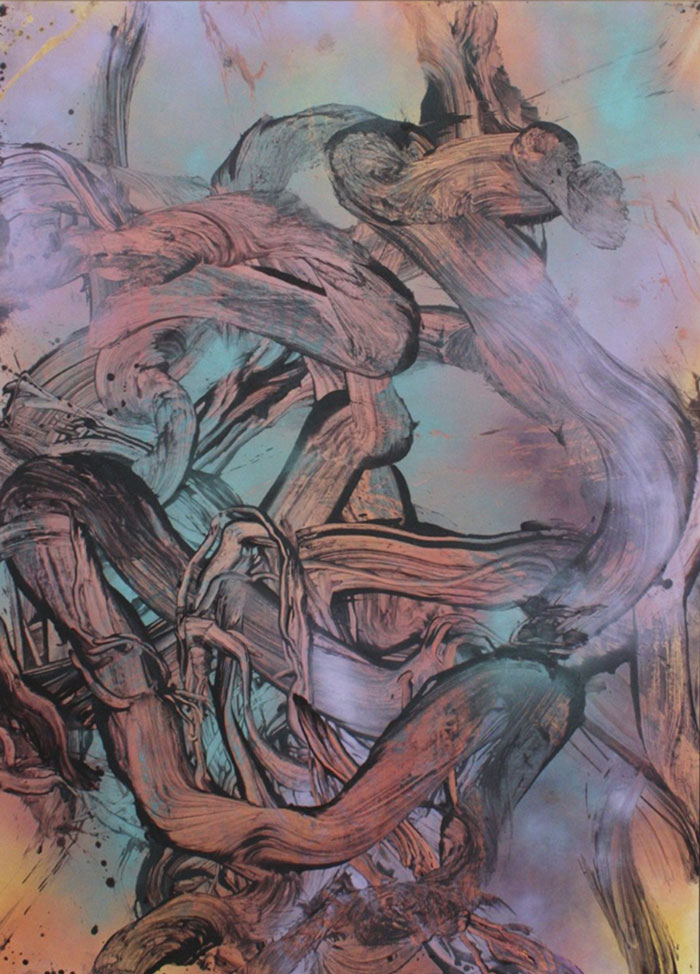
-
Energy Trap. Judy Millar 2018
-
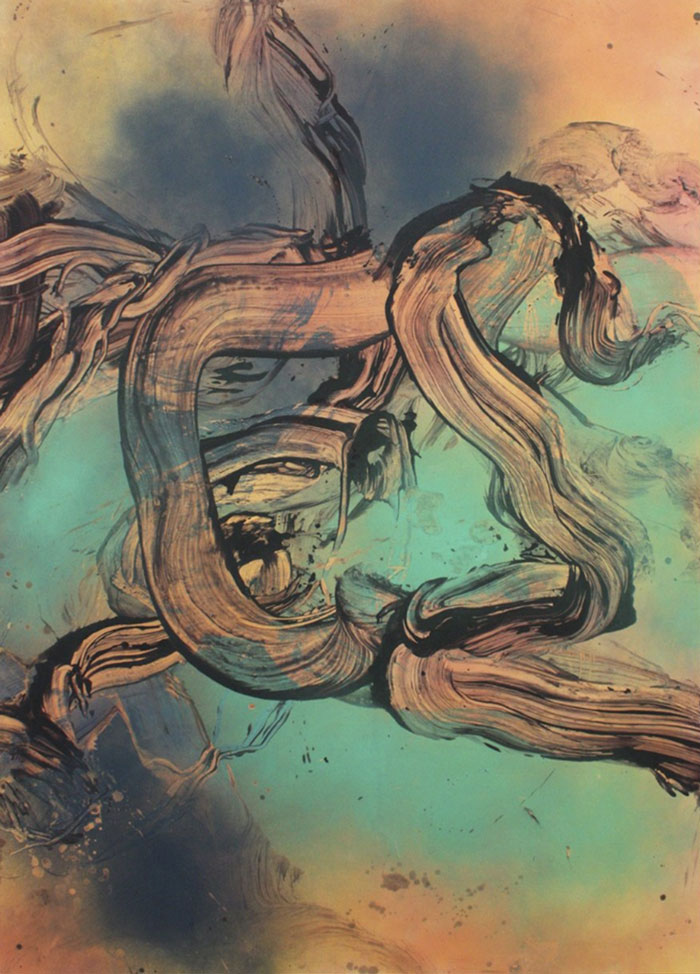
-
A World Not Of Things. Judy Millar 2018
This is very much evident in her show Welcome to the Fluorescence at Nadene Milne Gallery in Christchurch. There are just three big paintings in the main gallery space—and that is precisely enough in equilibrium with the space. The titles, Energy Trap, Waves Without Shape, A World Not of Things, are cautiously non-committal, setting up the audience with ambiguous hints at quantum mechanics and Zen ontology and letting them get on with the business of interacting with the work. The paintings activate each other. A World Not of Things might almost be toying with Chinese scroll painting—the palette and confident, but contained, calligraphic line—or a slightly Rococo interpretation thereof. The human tendency to pareidolia, finding order and shape where there is none, invokes everything from tangled tree branches and roots, to the Vatican’s Laocoön, but really it’s all about mind-mapping emotional and physical energy flows in moments of time.
‘Energy’ however, sounds like New Age handwavium. There is the physical energy of movement, of course, but might be better to call it thumos (θυμός)—passion, spiritedness, the internal urge for recognition, righteous rage against the injustices of the world, that which motivates human beings to exist. Peter Sloterdijk in his 2006 Rage and Time suggests that a productive, resentment-free form of ‘rage’ (which he, perhaps incorrectly, equates with thumos) is the primary motivating force of human social development, which Christian morality and psychoanalysis have attempted to supress (some might also include the contemporary politics of social discourse). This leads us to Mannerism.
Millar consciously aligns herself with the Mannerists, that oft maligned tendency in art that bridges the High Renaissance and the Baroque. The style is characterised by affected exaggeration and unnatural elegance in pursuit of effect. The standard art-historical view of how Mannerism came about tends to be that the followers of Michelangelo copied his dramatic and individual innovations, and their students copied them, and the resulting transcription errors resulted in flourishing mutations like Parmigianino’scameleopardine Madonna with the Long Neck (1534-40), the porcelain complexions of Bronzino’s Venus, Cupid, Folly and Time (ca.1544-45), and Pontormo’s boneless, gravity-defying Depozisione (1528).
This is, in fact, not a subtle aspect of Millar’s work. The calculatedly optical effects of her palette and what looks like airbrushing declare open allegiance with the taffeta-like gradated colours of Pontormo’s draperies and garments. The open-ended, asymmetrical and complex Hans Hofmann-esque push-pull, and weaving in and out, of the bravura strokes—swept, painted and scraped back with a number of tools, including a plastic bag full of sand—conjure up impressions of the compositions of Parmigiano, Bronzino and El Greco as filtered through a century of transcendental abstraction.
An alternate interpretation of Mannerism, re-assessed against the political, intellectual and social crises of the twentieth century, was put forward by Italian critic and art historian Achille Bonito Oliva in his book The Ideology of the Traitor: Art, Manner and Mannerism, first published in 1979. Oliva reframes Mannerism as a subversive stylistic armour, tinged with hopeless melancholy, against the chaos of war and religious schism when it seemed the ideals of the Renaissance had failed and fallen. The artist, particularly the gay artist without benefit of the social transcendence of classical idealism, was identified as a traitor against their broader community, so why not make something of it? Bonito Olivia has elsewhere drawn parallels with postmodernism, and Susan Sontag intuited as much in her ‘Notes on Camp.’
-
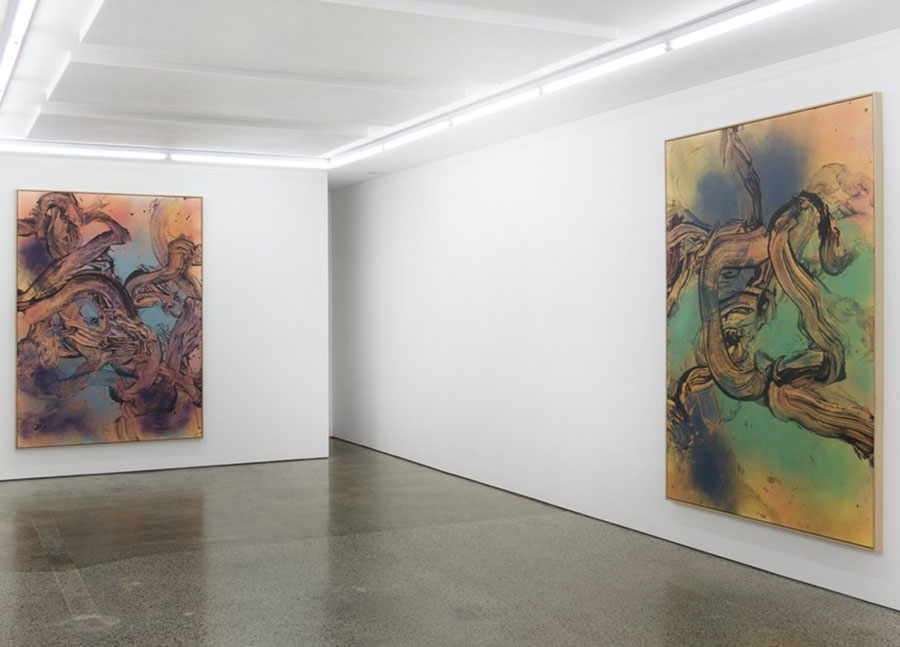
While I wouldn’t call Millar’s work ‘camp’ per se, she observes that we live in “Mannerist times” (Trump, orange and coiffed, being la Maniera par excellence). The bravura gesture, the outrageous fluorescent palette, the occasional insouciant hand or footprint (Millar works on the ground) cock a snook at a Western civilisation apparently intent on self-immolating itself with as much dignity as it can muster. At the same time Millar very deliberately aligns herself with the grand tradition, albeit on her own terms—as something quite daring when that might be considered a liability in this sensitive age.
The antipole to Millar’s mannerism would be the Rococo—an equally fitting style for the present era, when the 1% squandered their wealth and resources on superficiality and frivolity, a style which also prioritises sinuous line and asymmetry. Even then the artists were getting their own back in silent protest—the wistful melancholy of Watteau, the brittle fragility of Fragonard—and if Millar ever ventures into a palette of silver, grey and faded rose, it would not shock me in the least. – Andrew Paul Wood.
Original article here.
